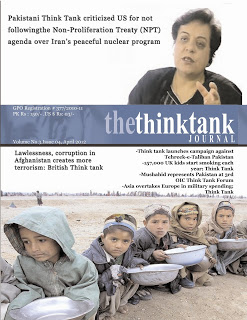In the gilded halls of Geneva, where the ghosts of post-WWII optimism still linger, China’s diplomats didn’t just speak—they issued a clarion call. At the World Trade Organization’s General Council gathering on October 6-7, 2025, Beijing urged 164 member nations to band together against a rising tide of protectionism, framing it as an existential threat to the rules-based global order. But why now? And what’s really driving this push? As U.S.-led tariffs bite deeper into supply chains and AI-fueled trade booms mask underlying fractures, China’s move isn’t mere diplomacy—it’s a calculated bid to reshape the world’s economic battlefield.
Mounting Trade Turbulence Hits a Boiling Point
Picture this: Global merchandise trade is projected to chug along at 2.4% growth in 2025, a welcome upgrade from earlier gloom-and-doom forecasts of 0.9%, thanks to a frenzy of AI hardware imports and a U.S. shopping spree. Yet, beneath the surface, cracks are widening. Unilateral tariffs—particularly Washington’s escalating duties on key partners—have slashed U.S. growth projections by 0.23 percentage points this year alone, with a steeper 0.62-point hit looming in 2026. For China, the pain is acute: Average tariffs on its exports to the U.S. have ballooned to 57.6%, more than double January levels, throttling sectors from electronics to renewables.
Beijing’s rationale is straightforward yet searing: These “power-based” tactics—coercing bilateral deals that sideline multilateral rules—are eroding the WTO’s foundations, disrupting supply chains, and fueling instability. China’s envoy laid it bare, pinpointing U.S. policies as the chief culprit in a world where trade diversion effects are already rerouting billions in flows away from affected economies. It’s not hyperbole; vulnerable nations like Nigeria and Bangladesh are pleading for WTO aid as uncertainties hammer their exports, while even powerhouses like the EU decry the shift from rules to raw leverage.
This isn’t China’s first rodeo—recall its vocal slams on “reciprocal tariffs” just days earlier—but the timing feels urgent. With the WTO’s dispute settlement revival stalled and services trade growth dipping to a forecasted 4.6% amid headwinds, the organization itself warns of “stiff” challenges from policy ambiguity. Beijing sees the moment ripe to flip the script: From victim of volatility to vanguard of stability.
Beyond Rhetoric to Realpolitik
Dig deeper, and China’s call reveals layers of self-interest wrapped in high-minded ideals. At its core, this is economic self-preservation. As the world’s factory, China relies on open markets for 18% of its GDP tied to exports; tariff walls threaten to shave 0.5-1% off its growth trajectory, even as the World Bank nudges its 2025 forecast upward to 4.8% on stimulus fumes. By championing transparency—demanding proactive notifications on bilateral pacts—Beijing aims to expose and isolate tariff-heavy moves, buying time to diversify via Belt and Road corridors or ASEAN hubs.
Geopolitically, it’s a masterstroke in coalition-building. Echoes from Brazil, Australia, Switzerland, Pakistan, and even New Zealand signal broad buy-in, with the EU voicing “serious concern” over the multilateral erosion. China isn’t just defending itself; it’s courting the Global South, where delegates from Venezuela, Cuba, and Nicaragua thundered against coercive practices. This aligns with Beijing’s September 2025 pledge to forgo “special and differential treatment” perks for developing nations in future talks—a “self-sacrificing” gesture that burnishes its image as a responsible superpower while pressuring holdouts like the U.S. to reciprocate.
Skeptics might call it performative—after all, forgoing benefits costs China little in practice, given its market heft—but the motive shines through: Cement leadership in a fracturing system. Domestically, it rallies support amid economic headwinds, portraying Xi Jinping’s vision as a bulwark against “hegemonic” overreach. And strategically? It’s a soft-power jab, underscoring how unilateralism alienates allies, from Seoul’s monitoring pleas to Brasília’s reform push.
China’s Three-Pronged Pitch
| Recommendation | Angle | Potential Payoff |
|---|---|---|
| Boost Transparency & Monitoring | Expose hidden bilateral deals | Levels playing field; early warnings for affected exporters |
| Reaffirm Multilateral Rules | Rally against “power-based” shifts | Isolates tariff aggressors; rebuilds dispute mechanisms |
| Drive Pragmatic WTO Outcomes | Focus on reforms with development lens | Empowers Global South; positions China as reform architect |
The reverberations extend far beyond Geneva. For the U.S., it’s a diplomatic thorn—its tariff tracker shows hikes on everything from steel to EVs, yet resilience in global trade (up 2.8% in 2024) buys time before full blowback hits consumers with higher prices. Europe cheers quietly, eyeing its own green trade barriers, while developing economies see a lifeline: WTO assistance could buffer the 23% drop in intra-African trade from similar uncertainties.
Critics, however, flag risks. Over-emphasizing multilateralism might slow urgent reforms, like e-commerce rules where China dominates. And if 2026’s dismal 0.5% trade growth materializes—down sharply from this year’s rebound—Beijing’s unity call could falter amid recession fears.
China’s Endgame:
So, what are Beijing’s true targets? Short-term: Thwart immediate tariff escalations by amplifying multilateral pressure, potentially carving out monitoring mechanisms by year’s end. Medium-term: Lead WTO reforms that embed “development-oriented” flexibilities, ensuring allies like Bangladesh gain while China sheds its “developing” label without losing clout.
Long-term, it’s grander—a “more open, equitable” system where China calls more shots, countering U.S. “dual circulation” critiques by proving its WTO fidelity. Success hinges on buy-in: If echoed by a coalition spanning BRICS to the Quad’s fringes, it could stabilize 2026’s outlook. Failure? A splintered WTO, accelerating bilateral blocs and trade wars.
In this high-stakes tango, China’s call isn’t altruism—it’s ambition with an alibi. As the WTO’s director-general noted, the system’s “core continues to work,” but only if nations like Beijing keep pushing the pedal.



